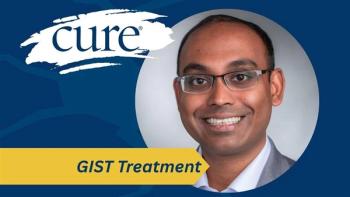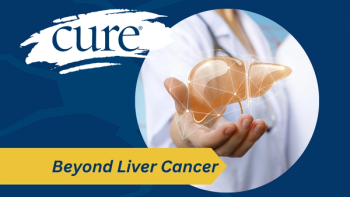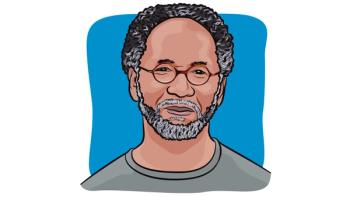
Obstacles Persist in Using Immunotherapy for Treatment of Melanoma
Key Takeaways
- The CheckMate-069 study demonstrated improved survival with Opdivo/Yervoy combination over Yervoy alone, but with increased toxicity.
- Autoimmune toxicities from the combination therapy require careful monitoring and immediate intervention with steroids and immunosuppression.
Recent years brought many advances in the field of immunotherapy in melanoma, but more still needs to be done.
The field of melanoma is vastly different than it was in recent years, says Norman E. Sharpless.
“Most of us are old enough to remember a time when there was nothing going on in melanoma,” said Sharpless, professor of Medicine and Genetics, chair, the University of North Carolina (UNC) Lineberger Comprehensive Cancer Center, UNC School of Medicine. “Now, to have so many different therapies that are showing promise is very exciting.”
While there is a clear benefit to having an abundance of therapies, the privilege comes with its own set of difficulties, says Sharpless.
“There are so many active drugs available now as single agents, so trying to figure out how to optimally pair them is really becoming a major challenge,” he says.
Determining if and how to combine Opdivo (nivolumab) and Yervoy (ipilimumab) — two drugs that have shown significant success in melanoma individually — is one such obstacle.
The phase 2 CheckMate-069 study demonstrated a two-year overall survival (OS) rate of 64 percent with the combination of Opdivo and Yervoy compared with 54 percent for Yervoy alone in patients with advanced melanoma. The median OS at two years in patients randomized to either the combination or monotherapy has not been reached.
Looking just at patients with BRAF wild-type melanoma, the two-year OS rate with Opdivo / Yervoy was 69 percent compared with 53 percent for Yervoy alone. The median OS among patients was not reached with the combination regimen and was 24.8 months with Yervoy monotherapy.
In an interview with CURE, Sharpless discusses the impact of the CheckMate-069 trial, the toxicities that are associated with Opdivo / Yervoy, and what the future holds for immunotherapy combinations in the field of melanoma.
What did we learn from the CheckMate-069 study?
This showed more mature survival data and results were consistent with prior reports. The combination is very effective in melanoma. It has a very high response rate and those responses tend to be durable. Median survival has not yet been reached but, at two years, more than half of patients are still having a response. This combination is clearly more effective than Yervoy as a single agent, but it is also more toxic—including three treatment-related deaths in the combination arm versus no deaths in the Yervoy arm.
This trial allowed crossover, so patients who failed Yervoy could then go on to Opdivo or other therapies, and many of them did that. There is no OS benefit yet, likely because of the high frequency of Yervoy-only patients who crossed over to Opdivo.
What should patients know about the side effects of Yervoy and Opdivo?
It is bringing some clarity to this area. Clearly, Yervoy works for metastatic melanoma, and Yervoy/Opdivo works better, but it is more toxic. These drugs can be given sequentially, as well as at the same time, so exactly how to use them is going to require further large, randomized trials, which are ongoing.Many oncologists are becoming familiar with the toxicities of Yervoy, as it has been approved for a while. The major toxicity of that is colitis, and it is a certain life-threatening version of colitis that requires immediate indication for steroids. Opdivo, as a single agent, seems to be better tolerated; there are not a lot of toxicities. The most prevalent toxicity is likely pneumonitis, but it tends to be mild. It is important to recognize that some of those patients require anti-immunity therapies, as well.
The combination is substantially more toxic than either therapy alone. The deaths on trial have been from events such as hypophysitis, adrenal crisis, significant hepatic toxicity and some significant gastrointestinal toxicity, in general. Patients who have been treated with the combination really have to be carefully monitored for a variety of autoimmune toxicities, which are quite diverse, and demand immediate use of steroids and other kinds of immunosuppression.
Having said that, one of the encouraging things regarding the combination arm is that most of the toxicities tend to be upfront. In the patients who have now been followed for an additional year, there have been no further deaths and no further toxicities. It seems that if the patients tolerate the regimen and get a few months through, then the big-time toxicities have passed.
What are the biggest challenges that remain regarding immunotherapy in melanoma?
What do you see on the horizon for this field?
There are questions that still remain regarding if there will be late autoimmune side effects, and we just don’t have enough follow-up to know if there will be right now.We really need to determine which patients will benefit from what therapy. There is an Opdivo study right now looking at biomarkers to determine who is going to respond to immunotherapies. It seems that for patients that express PD-L1 on their tumors, it is quite clear that they have a higher chance of responding. However, there are PD-L1—negative patients who respond, too. Identifying the optimal biomarker, the optimal sequence, and the best ways to reduce toxicity are really the most important challenges we need to tackle.It is a very exciting time. There [are several] small molecules that are being developed for combination with PD-1 antibodies and other sorts of immunotherapies, that could make the tumor more immunogenic, and that is very exciting. There is also quite a lot going on with engineered T cells, particularly CAR T cells.





